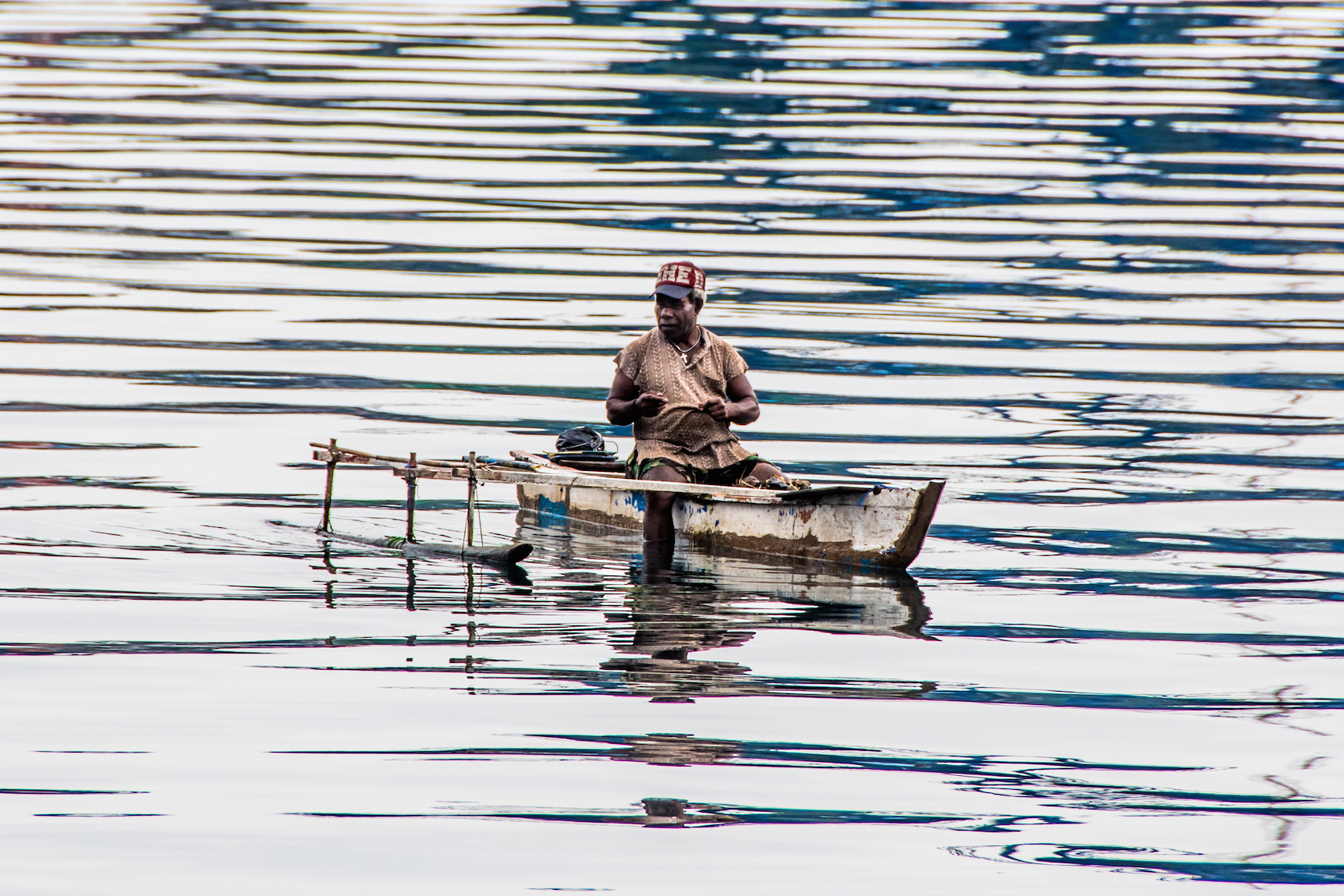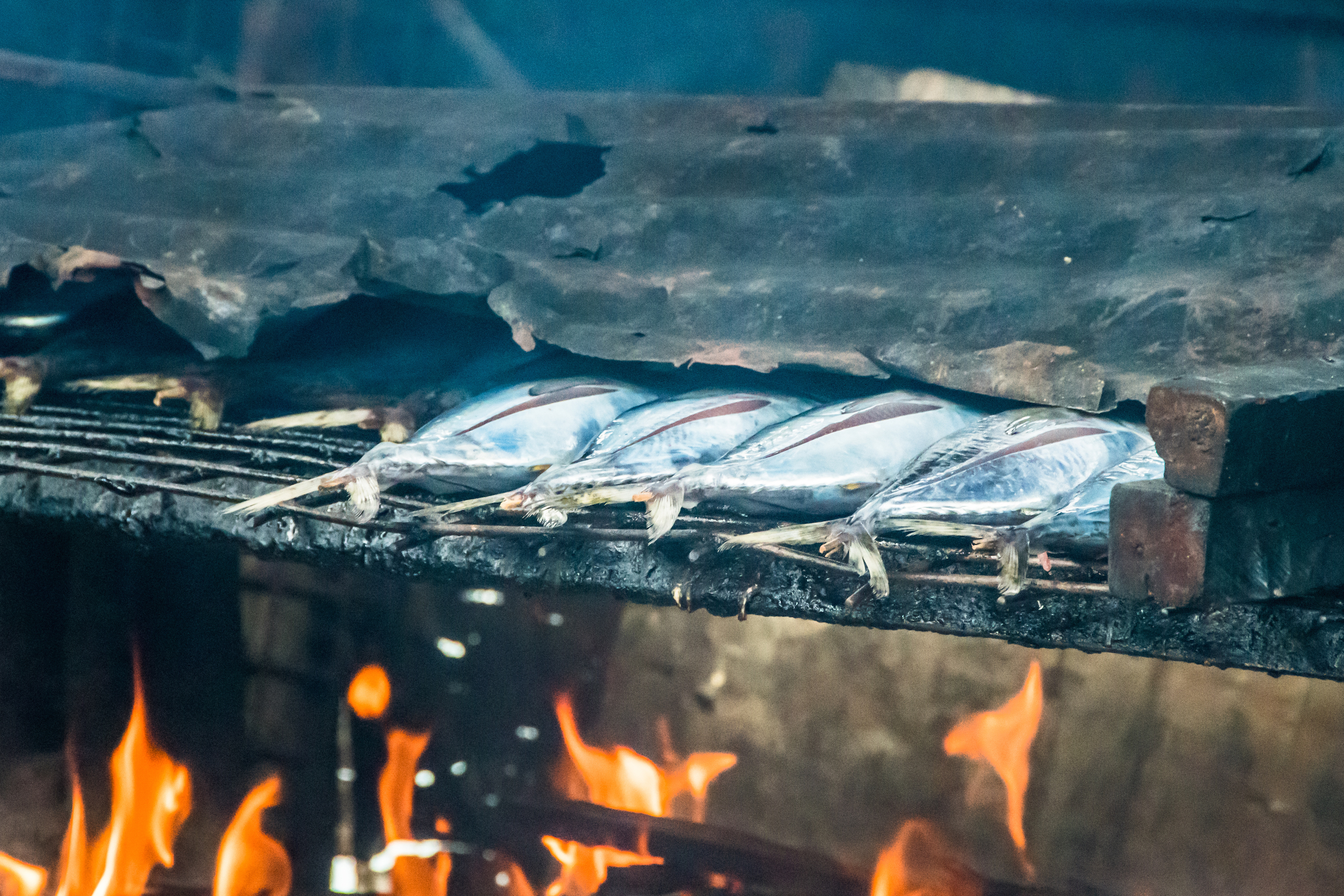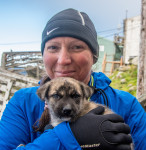Indonesia boasts the world’s largest archipelago composed of approximately 13, 500 islands, over 6, 000 of these are inhabited. This makes sea transport crucial for domestic and foreign trade, and the fishing industry is a predominant figure within the country’s economy. Indonesia may in fact be the world’s largest tuna producer supplying 16% of the world’s finfish market. Each of the major islands in this archipelago has at least one significant port city, and the lives of many Indonesians are linked with water – through fishing, boating, and the location of their homes suspended above the sea.

Photo : Annie-Claude Roberge
The hotel where we are staying sits right on the western edge of Jayapura. Numerous homes sit on stilts above the sea and boats are anchored throughout the bay. Many of the boats here originate from the traditional Papua paddle canoe design – which are extremely narrow boats that have a supporting float on one side. The paddler/fisherman sits high on wood nailed across the top of the gunwale and fishes with a hand-line. There are also larger boats constructed in the same style with floats on either side and are now often accompanied by an outboard motor on the back. There are also Papua canoes with a short mast and sail! Open aluminum fishing boats are also common and some with a small roof to protect fishermen from the sun. Most of the boats have an icebox to keep their catch cold.

Photo : Annie-Claude Roberge
At the end of one of our training sessions, our small fishing boat stopped at a Bagan (fishing home) for us to visit. I had been mesmerized by the beauty of the dozen Bagan I could see from the shores of Jayapura, each is stationary vessel secured with a thousand pound anchor. To board the ship, we climbed up through the large lattice styled wood framing of the deck which extends all around the boat 8 feet above the water. Thirty fishing nets are affixed to the craft with 300 cables that wrap evenly around the exterior of the deck and meet high above on two mast like structures. Despite being a place of work, I couldn’t help but admire a romantic side of this construction as the cables above appeared like a webbed veil thinly separating us and sky. The clang of the generator, however, brought me back to the reality of this fishing vessel. Between these masts sits the control room measuring about 18 x 12 feet with a generator to one side and a central-dividing wall filled with electrical panels to power the mercury lights which attract the fish.

Photo : Annie-Claude Roberge
Sixteen men live onboard for one month at a time, sleeping on the hard wood floor of the control room with the loud and hot generator as their bedmate. After each month of work they go home for two weeks and then return. The nets are brought up 4 times a day: first at 9pm, then working through the night at 1 and 5 am and a final haul at 10 am. They have a 24ft motor boat to bring their catch to shore daily and pick up supplies.

Photo : Annie-Claude Roberge
They live without a washroom, shower, beds, sheets or towels, and have only a single burner for cooking their food. Through our guide Donald, they answered all of our questions about the Bagan and how they live and work there. They smiled ear to ear during our visit and we shared much laughter in a short time. Despite the language barrier, the people of Jayapura are quick to smile and welcome us wherever we go!

Photo : Anastasia Polito
_________________________________________________________________________________________
Anastasia Polito – Entraîneur o5Swim



Leave A Comment